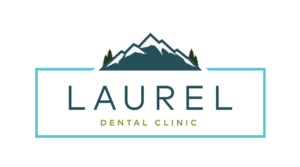COMPREHENSIVE DENTAL HYGIENE
Professional dental hygiene with routine check-up and cleaning
ROUTINE HYGIENE WELLNESS
Improve your daily brushing and flossing with Laurel Dental Clinic!
To maintain good oral health, start your dental hygiene routine by brushing and flossing your teeth daily. This practice helps remove a significant amount of plaque and bacteria that accumulate on your teeth. However, you cannot eliminate all of it on your own.
Achieving good oral health & visiting the dentist
Your dental hygienist will partner with you to achieve optimal oral health. Therefore, visit the dentist at least twice a year for a professional cleaning to prevent tooth decay and periodontal (gum) disease. Based on the condition of your teeth and gums, our dentist may recommend more frequent visits. We offer a range of services designed to enhance your hygiene and overall health.
What to expect at your check-up appointment:
- Visual evaluation of teeth, face, jaw and neck
- Digital images to check for cavities and other possible problems
- Professional teeth cleaning and fluoride treatment
- Screening for oral cancer
How Can We Help?
Comprehensive Dental Evaluation
Here is what is included in your typical hygiene appointment.

Visual & Gum Disease Evaluation
During your evaluation, our dentists will check your teeth for cracks, breaks, or decay. They will also examine your cheeks, gums, tongue, and the roof of your mouth for any abnormalities or issues.
Additionally, we perform a comprehensive assessment to check for signs of periodontal disease since nearly 50% of adults in the U.S. are affected (Center for Disease Control). If you address this condition in its early stages, you can easily control and possibly reverse periodontal disease.
Digital Imaging
The dentist may recommend taking digital x-rays and photographs to identify problem areas in your mouth. The type of images varies based on your specific situation.
For instance, the dentist will typically take a full jaw x-ray, called a panoramic x-ray, to provide a comprehensive view of all structures in your mouth, including your jaw joint and sinuses. In some cases, the dentist may determine that digital 3D imaging is appropriate to pinpoint the exact positioning of your teeth.
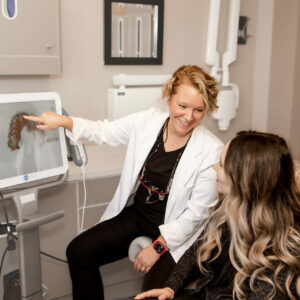
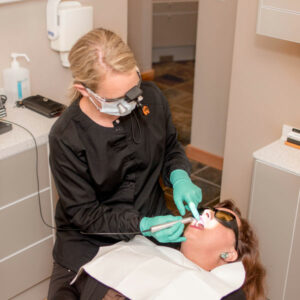
Advanced Dental Treatments - Fluoride Treatment
The American Dental Association (ADA) recommends fluoride treatments based on your risk for developing cavities. Our team evaluates your risk as low, moderate, or high using criteria outlined by the ADA. For most individuals with low risk, we offer fluoride treatment twice a year.
However, if you have a high risk for cavities, we may provide fluoride treatment more than twice a year along with take-home fluoride products and an antimicrobial rinse to reduce cavity-causing bacteria.
Professional Teeth Cleaning
Our skilled hygienists undergo thorough training to perform effective teeth cleaning. They remove plaque and tartar from your teeth before polishing them to eliminate stains and smooth the tooth surface.
In addition to using hand-held hygiene techniques, our hygienists deliver targeted treatments to hard-to-reach areas with ultrasonic devices. These devices emit ultrasonic vibrations that break apart and move calcified deposits of calculus.
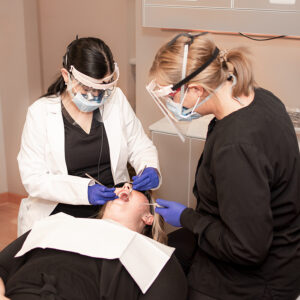
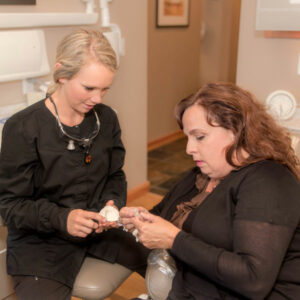
Oral Cancer Screening
Oral cancer cases are on the rise; however, if detected early, most patients respond favorably to treatment. Smoking increases the risk of developing oral cancer fivefold. Excessive alcohol use raises this risk two and a half times, while persistent HPV (Human Papilloma Virus) infection increases it thirty-two times.
During your dental visit, the dentist will visually examine all tissue in your mouth—including your tongue, lips, and cheeks—checking for any abnormalities. She will also palpate for unusual lumps or bumps and recommend follow-up steps if necessary.
LASERS IN DENTISTRY
Taking your dental care into the modern age
For several years now, dentists have utilized lasers in dentistry to provide additional benefits when combined with regular cleanings or therapy for gum disease. Our hygienists perform two specific laser procedures that can reduce your risk of gum disease or improve healing if gum therapy is indicated.
LASER BACTERIAL REDUCTION
Also known as "Laser Decontamination"
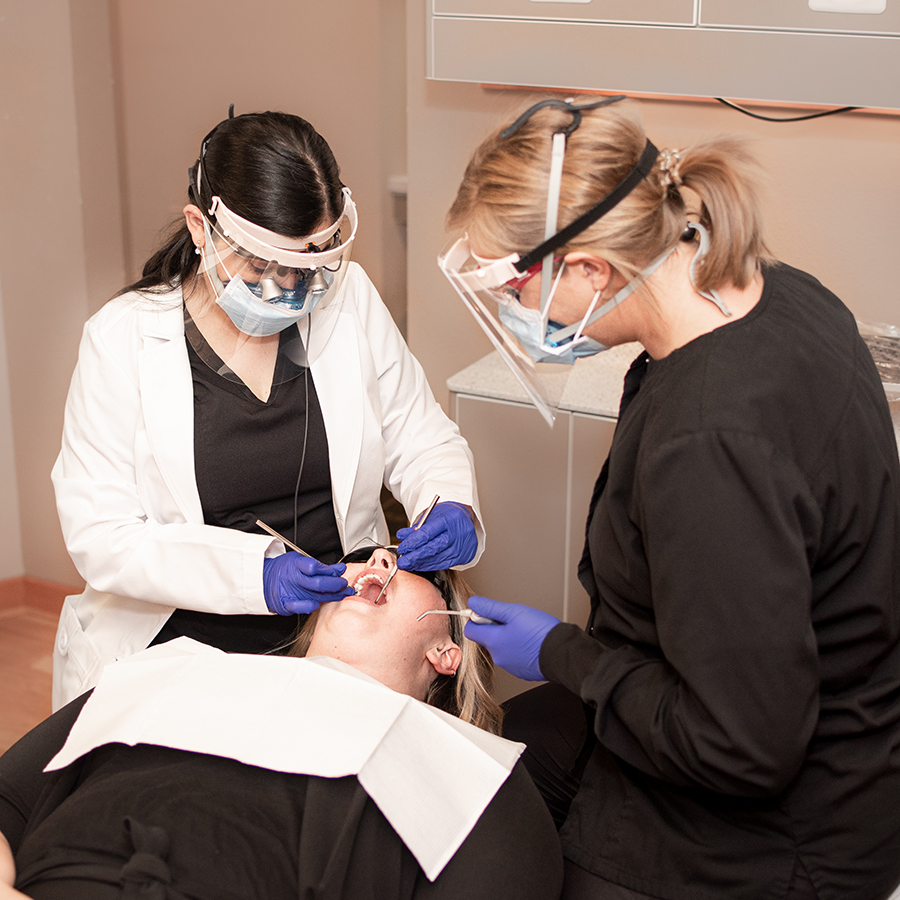
In one procedure, thermal light energy emitted through a small fiber optic tip targets harmful bacteria at or below the gum line—known as biofilms. Biofilms directly correlate with an increased risk of developing gum disease—a serious infection affecting the supporting bone.
Vaporize the Harmful Bacteria
During your hygiene appointment, the hygienist disrupts biofilm formation to reduce the risk or severity of periodontal disease; however, they cannot eliminate bacteria without using the laser. By destroying these bacteria, we can reduce inflammation in gum tissue and keep your gums healthier between visits.
There are no known side effects to laser decontamination. Most patients do not report any sensation during or after the use of the laser. Occasionally, patients will describe a warm, tingling sensation felt during the procedure. Laser decontamination takes approximately 5-10 minutes to complete, and the entire mouth is treated at one time.
The laser uses light energy that is absorbed into the pigmented cell walls of the harmful bacteria, vaporizing them. The bacteria in our mouths that do not contribute to inflammation typically lack pigment in their cell walls and thus are not affected in the same way.
Dental professionals now have access to this technology by using a laser specifically designed to treat the gums. Due to the advances in the production of these dental lasers, our office now has the availability to offer laser decontamination. We are happy to treat our patients with an elevated level of care that is not only supported by years of research but also affordable.
Although the laser kills millions of harmful bacteria at your hygiene appointment, the bacteria will begin to multiply again over time, and will eventually be back to their original levels in a few months. For this reason, we recommend laser decontamination be included every time you see your hygienist.
For some patients with a history of periodontal treatment, that is every 3 months. You may be thinking to yourself, “If the bacteria just grow back, what’s the point?”. One of the most important factors in obtaining optimal oral health and control of periodontal disease is your body’s ability to fight off these harmful bacteria.
It is true that we are unable to kill the bacteria forever with a single use of the laser, but if it is completed at each appointment, we are able to keep them at a constant lower level, giving your immune system the chance to keep your body healthier.
LASER ASSISTED PERIODONTAL THERAPY
Active periodontal disease results from a bacterial infection that breaks down gums and bone surrounding teeth. During gum therapy, your dental hygienist typically removes infected tissue through a procedure called curettage. This non-surgical approach involves using local anesthetic for comfort.
Removing Diseased Tissue
Research shows that incorporating lasers into gum therapy produces earlier and greater improvements in gingival health while enhancing wound healing. The diode laser’s thermal energy stimulates circulation and collagen fiber formation while reducing inflammation and bleeding.
There are no known side effects to incorporating the laser into gum therapy. Most patients report no discomfort during or after the use of the laser. Local anesthetic is utilized for most laser assisted periodontal therapies. It is also recommended to apply vitamin E oil following the therapy to provide a lubricant barrier and additionally promote healing.
Dental professionals now have access to this technology by using a laser specifically designed to treat the gums. Due to the advances in the production of these lasers, our office now has the ability to offer laser-assisted periodontal therapy as part of our standard of care. We are happy to treat our patients with an elevated level of care that is not only supported by the research but also affordable.
Although the laser kills millions of harmful bacteria during the procedure, the bacteria will multiply again over time, returning to original levels over the next several months.
For this reason, we recommend laser decontamination therapy be included every time you see your hygienist. For some patients with a history of periodontal disease, this may be every 3 months.
One of the most important factors in obtaining optimal oral health and controlling periodontal disease is the body’s ability to fight off these harmful bacteria. Incorporating laser bacterial reduction into appointments following initial gum therapy keeps the bacteria at a lower level, giving the immune system a chance to keep the gums healthier.
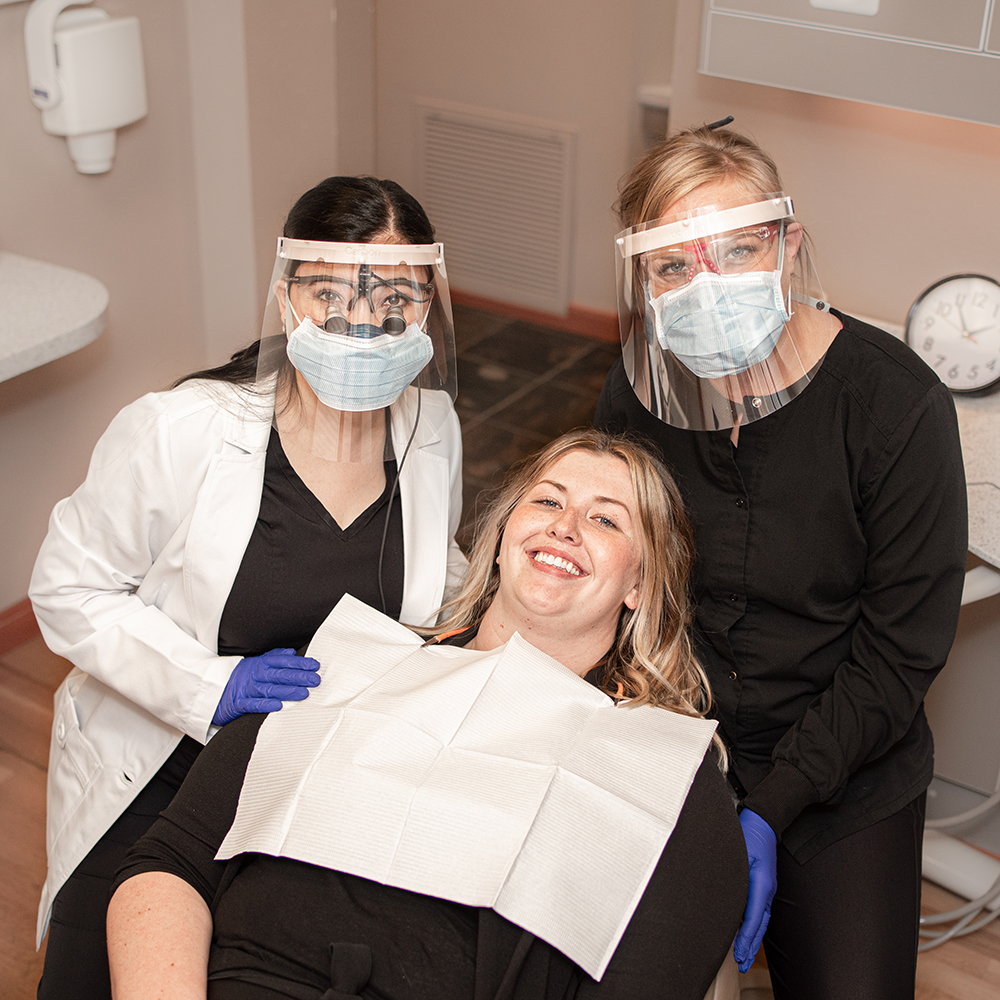







How often should I get my teeth cleaned?
The Academy of General Dentistry recommends visiting the dentist for check-ups and cleanings at least twice a year. Depending on your specific situation and risk factors—such as diabetes, heart disease, or pregnancy—our dentist may advise more frequent cleanings to maintain both your health and oral hygiene.
Will my insurance cover my check-up appointment?
Most insurance plans cover procedures completed during check-up and cleaning appointments. Our dedicated team of insurance coordinators will assist you in navigating your specific benefits while providing an estimate of any remaining costs after insurance coverage.
